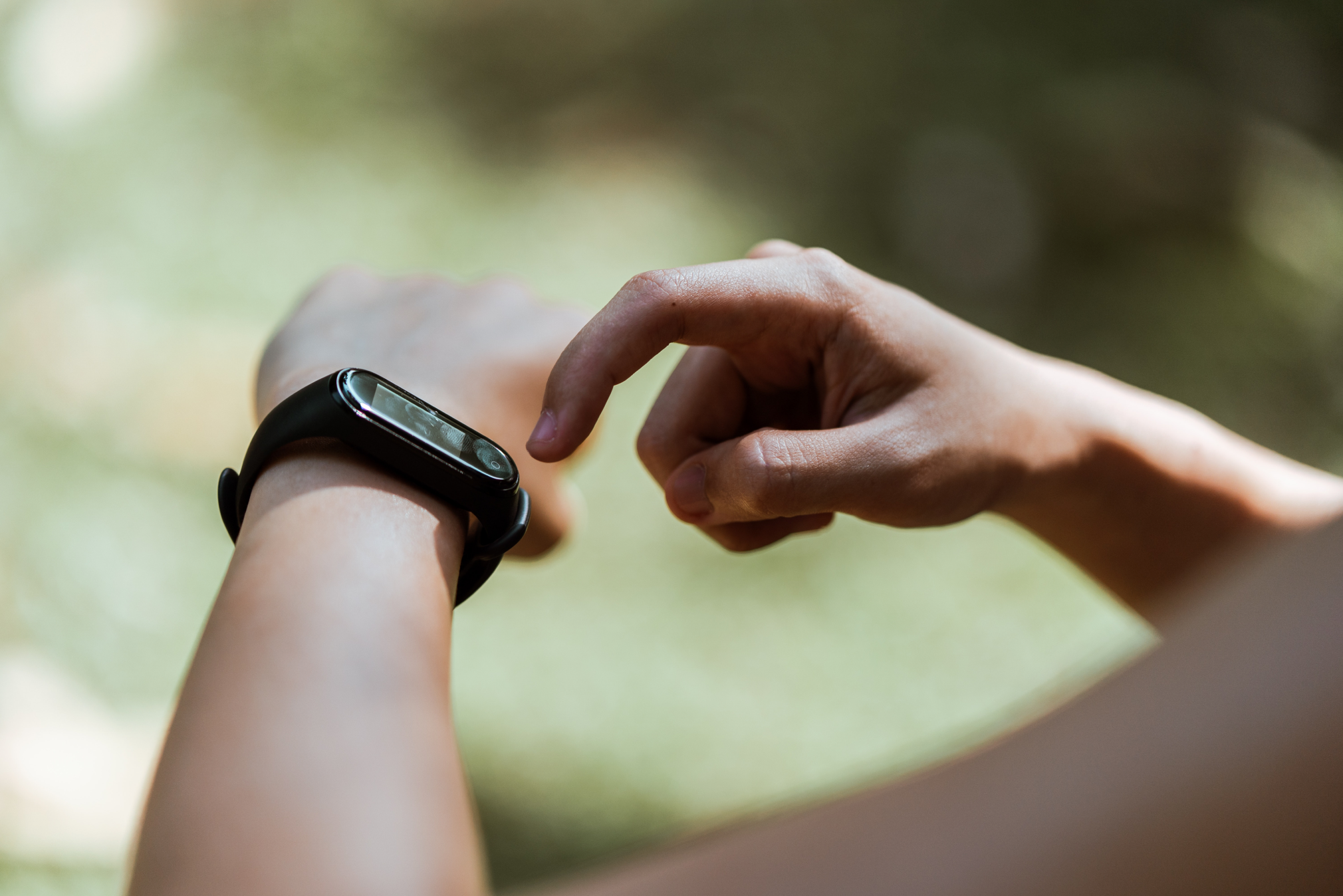Current applications, challenges, and opportunities at the intersection of consumer technology and remote care.
Once used mostly for counting steps, tracking sleep, and measuring heart rates, wearable devices such as smartwatches and fitness trackers have advanced rapidly. Newer features, such as temperature sensing, blood oxygen monitoring, and electrocardiogram capabilities, are bringing consumer-grade wearables closer to medical-grade devices.
Wearables adoption, applications, and aspirations vary across demographics and contexts. At a time when consumer technology and digital health are converging, we’re pausing to take stock of what wearables are, how they can be used in health, and what’s holding them back from achieving wider adoption and greater impact.
What are digital health wearables?
Digital health wearables are electronic devices that are worn on the body, typically as accessories or embedded within clothing, and are designed to monitor and track various health and wellness metrics. These devices can be used to measure heart rate, blood pressure, sleep patterns, physical activity, and other biometric and physiological parameters. The data collected by digital health wearables can be used for fitness tracking and personal wellness monitoring, as well as remote patient monitoring and research purposes.
Adoption and applications
The rise of the smartphone fueled a surge of fitness-oriented wearables with wireless connectivity, the most common being devices like Fitbits, Jawbones (now defunct), and Apple Watches. Between 2014 and 2021, global shipments of wearables increased from nearly 29 million to more than 533 million. By 2019, one in five U.S. adults were using a fitness tracker. In 2022, the portion of iPhone users who also have an Apple Watch reached 30%, and a Rock Health survey found that 46% of U.S. adults owned a wearable device. Adoption has been highest among women, young adults, and higher-income households, and people who are well are more likely to own wearable devices than those in poor health.
As adoption grows and technology advances, interest in the health applications of consumer-grade wearables is also spiking. At the same time, the lines between consumer-grade wearables and medical-grade devices are blurring as more companies pursue FDA clearance. Most uses (and potential uses) of digital health wearables fit into a few broad categories:
- Personal wellness. The most familiar use case for consumer-grade wearables is for fitness tracking and wellness optimization. Wearable owners can use their devices to track their daily activities, monitor their sleep, and set fitness goals. Wearables often sync with smartphone apps, which help users visualize their progress and provide recommendations for starting or maintaining healthy habits. A 2022 meta-analysis of wearables’ ability to increase physical activity and improve health found that while wearable use does result in increased physical activity and some moderate weight loss, the overall health impact of using a fitness-based wearable is weak.
- Health research. Data collected from wearables can be used in research to better understand the relationship between lifestyle factors, physical activity, and overall health. The large-scale data sets provided by wearables can enable researchers to identify trends and make more accurate predictions. The Apple Heart Study, conducted by researchers at Stanford University, enrolled more than 400,000 participants and was the largest screening study ever done on atrial fibrillation. Highly accessible and highly accurate digital health wearables could allow researchers to conduct virtual and remote clinical trials — globally, cost-efficiently, and at scale.
- Personal disease management. Wearable devices can be used to collect real-time data on vital signs and physiological parameters to assist patients with chronic conditions in self-monitoring and intervention. Wearables can promote treatment adherence through reminders and medication tracking while also encouraging healthy lifestyle choices.
- Remote patient monitoring. Wearables can be used for routine health monitoring of patients with chronic conditions, such as diabetes or heart disease. Devices like the Apple Watch record data such as heart rate, temperature, blood oxygen levels, and even gait — and connected devices can send that data to healthcare providers for analysis. This can help physicians detect and respond to early signs of health deterioration. Some devices also detect falls and automatically call for help if the user is unresponsive; these features can help older adults live independently with greater confidence.
- Clinical care, including remote care. Digital health wearables can be used in clinical settings to monitor patients before, during, and after procedures. The majority of people who receive care in a hospital prefer to be at home and don’t necessarily need to be in a hospital; medical-grade sensors and connected devices, including wearables, can enable clinical care outside the clinic. But in clinical care, the margin of error matters: It’s not a big deal if a fitness tracker miscounts steps, but a postsurgical heart monitor must be precise.
Barriers and opportunities
The roles of these technologies in our daily lives, as well as in the healthcare system, are poised to evolve in the near- and mid-term, as regulations, technological capabilities, access barriers, and culture shift. Ensuring that wearables benefit both patients and providers will require deliberate consideration of questions around equity, optimization, and integration. We’ve identified some of the biggest concerns, as well as a few organizations that are addressing these barriers.
- Equitable access. People who need wearable health devices the most are often the ones who use them the least. Accessibility is an issue; the cost of high-quality wearables can be prohibitive. RecycleHealth, a nonprofit based out of Tufts University School of Medicine, is addressing this barrier by collecting and refurbishing fitness trackers for underserved populations.
- Accuracy and trust. The accuracy and reliability of digital health wearables can vary, leading to concerns about the validity of the data collected. This can deter healthcare providers from recommending consumer-grade wearables to patients. Device makers continue to push the technology forward; Apple is reportedly working on a noninvasive blood glucose monitor. Other companies, such as BioIntelliSense, are focused on medical-grade devices that are designed specifically for remote care. As in other areas of technology, bias is also an issue: Researchers have identified alarming examples of bias in device studies, and in 2021, the FDA warned that at-home, digitally connected pulse oximeters may not recognize severe hypoxemia in people of color.
- Integration and interoperability. Integrating wearables data into electronic health records and other healthcare systems remains a challenge. To provide value to patients and enhance outcomes, the data provided by wearables must be useful to providers and fit into existing clinical workflows. To effectively establish new models of care that include wearables, providers and health systems need to consider a range of factors, including reimbursement models and data interoperability. Companies like Cadence are focused on the user experience for both providers and patients, creating technology solutions that parse a deluge of wearables data to produce more digestible and meaningful insights.
- Privacy and data security. The collection and storage of sensitive health data always raises questions about privacy and security. Users may be hesitant to adopt digital health wearables if they are not confident in the protection of their data. Security may be a concern for device makers and app developers seeking FDA clearance: The Food and Drug Administration now requires detailed cybersecurity plans for all new device submissions.
- Policies and regulations. Regulatory frameworks for digital health wearables are still developing, which can create uncertainty for manufacturers and healthcare providers. The Digital Medicine Society provides online resources to help innovators navigate digital health regulatory pathways, including the FDA’s Breakthrough Devices Program; DiMe’s federal comment toolkit helps those with expertise in the field lend their voice to policymaking and regulation.
Luminary Labs authors collaborated with a freelance writer and ChatGPT to develop this article.
Photo by Ketut Subiyanto.



